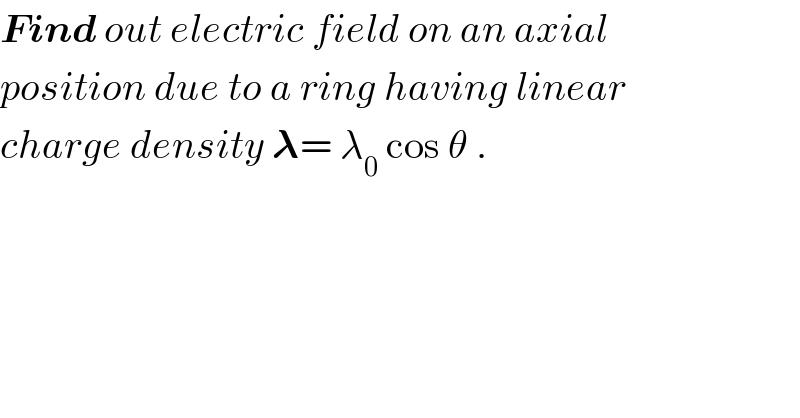
Question and Answers Forum
Question Number 33400 by rahul 19 last updated on 15/Apr/18

Commented by ajfour last updated on 16/Apr/18

Commented by ajfour last updated on 16/Apr/18

Commented by ajfour last updated on 16/Apr/18
![E_⊥ ^� =(dQ/(4πε_0 r^2 ))((R/r))(−cos θj^� −sin θk^� ) [in diagram above i forgot to include the ((R/r)) factor ] =((λ_0 R^2 cos θdθ)/(4πε_0 r^3 )) (−cos θj^� −sin θk^� ) E_x =0 , E_z =0 E_y =−((λ_0 R^2 )/(4πε_0 (x^2 +R^2 )^(3/2) )) ∫_0 ^( 2π) cos^2 θdθ =−((λ_0 R^2 )/(4πε_0 (x^2 +R^2 )^(3/2) ))×(1/2)∫_0 ^( 2π) (1+cos 2θ)dθ =−((λ_0 R^2 )/(4πε_0 (x^2 +R^2 )^(3/2) ))×(1/2)(2π) E = ∣E_y ∣=((𝛌_0 R^2 )/(4𝛆_0 (x^2 +R^2 )^(3/2) )) .](Q33439.png)
Commented by rahul 19 last updated on 16/Apr/18

